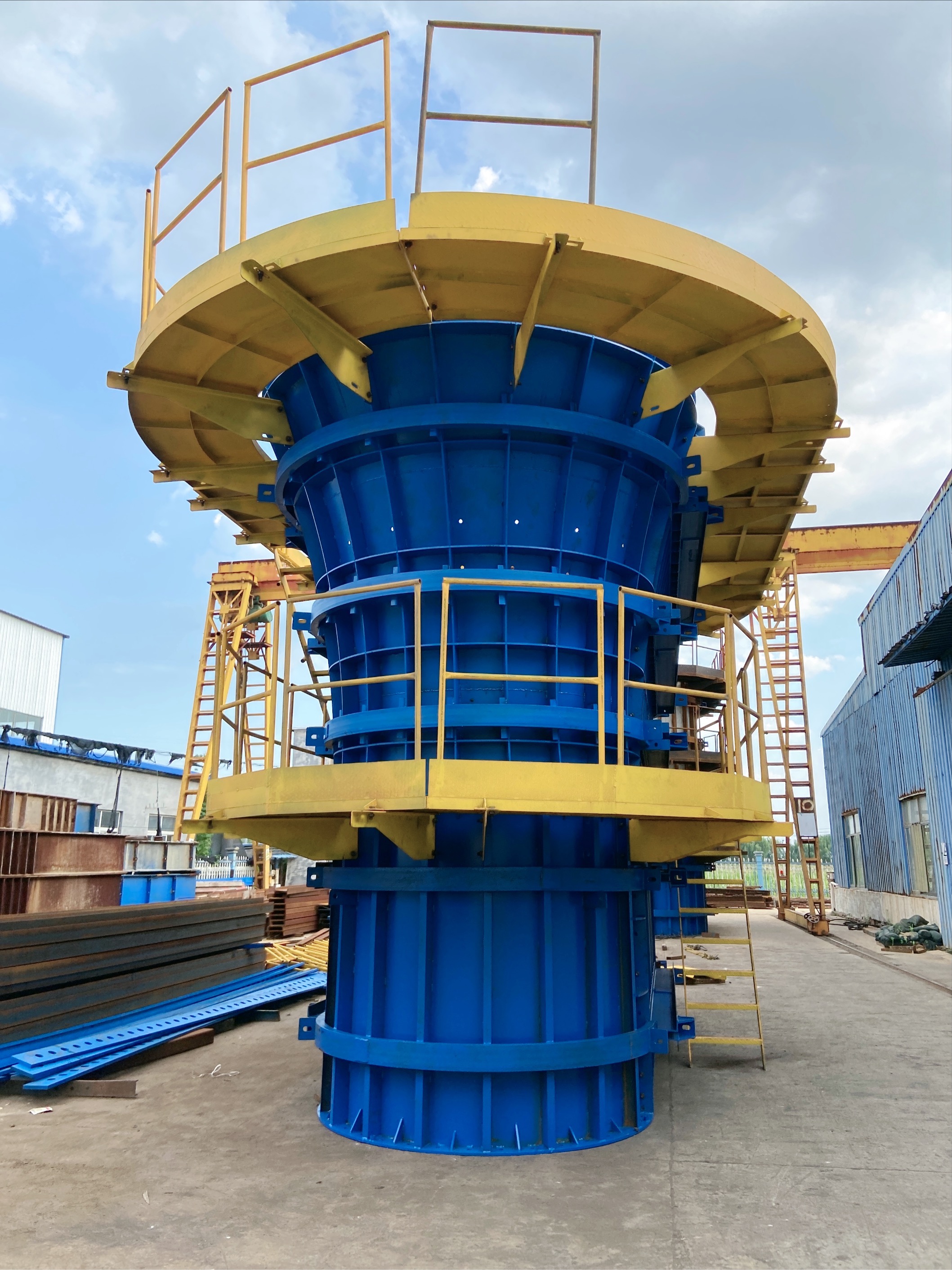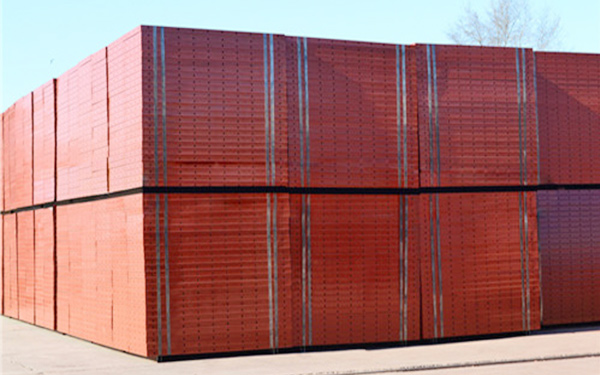Current position:
Home
News home
Industry News
Customized manufacturer of composite steel formwork: How to prevent and deal with steel formwork that is not allowed to be reserved or embedded?
Customized manufacturer of composite steel formwork: How to prevent and deal with steel formwork that is not allowed to be reserved or embedded?
source:Shandong Tianhong Heavy Industry Co., Ltd
Abstract:
In the construction of concrete structures, the position deviation of reserved holes and embedded parts (such as bolts, sleeves, anchor plates, etc.) on steel formwork can lead to difficulties in subsequent equipment installation and structural connection failure. The following is a systematic prevention and treatment plan for inaccurate reserved and embedded positioning, covering the entire process of design, construction, and acceptance:
1、 Common reasons for reserving and embedding deviations
Design issue: Unclear drawing annotations, unforeseen conflicts between embedded parts, steel bars, and templates.
Template processing error: Deviation in the position of the steel template opening or inconsistency in the hole diameter.
Construction positioning error: Incorrect laying out and inadequate fixation resulting in displacement during pouring.
Concrete impact: The pouring and vibration cause the embedded parts to shift or tilt.
2、 Preventive measures: Control accuracy from the source
1. Optimization during the design phase
BIM Collaborative Design:
Integrate building, structural, and electromechanical models using BIM technology, detect conflicts between embedded parts, steel bars, and templates in advance, and generate accurate positioning maps.
Drawing deepening:
Clearly define the center coordinates, elevation, and allowable deviation of the embedded parts (such as bolt center deviation ≤ 2mm), and mark the relative position with adjacent structures.
Standardized design:
For repetitive embedded parts (such as anchor bolt groups), positioning steel plates are used for overall embedding to reduce single point errors.
2. Steel formwork processing control
CNC cutting hole:
Use laser cutting or CNC machine tool to process template reserved holes, with a diameter 2-4mm larger than the outer diameter of the embedded part (easy to adjust), and a hole position deviation of ≤ 1mm.
Pre welded positioning bracket:
Weld angle steel or channel steel positioning brackets on the back of the steel formwork to ensure that the three-dimensional coordinates of the embedded parts are fixed (such as the verticality deviation of the casing ≤ 1 °).
3. Precise control of the construction process
Third level wiring positioning:
1) Total station surveying reference line → 2) Set axis line on steel formwork → 3) Recheck the centerline of embedded parts.
Rigid fixation measures:
Bolt type: Use positioning steel plates (thickness ≥ 10mm) to fix the bolt group, and lock it up and down with double nuts;
Casing: filled with foam or wood plug inside, and welded and fixed with reinforcement cross frame outside;
Anchor plate type: Back welded anchor bars are tied to the main structural bars to prevent concrete impact displacement.
Anti impact protection:
The concrete around the embedded parts shall be poured in layers to avoid direct contact between the vibrating rod and the embedded parts.
4. Concealed acceptance and monitoring
Acceptance criteria:
Allowable deviation of embedded type (mm)
Center position of embedded steel plate ≤ 3
Pre embedded pipe/casing centerline ≤ 5
Bolt exposed length+10mm, -0mm
Process inspection:
Before pouring, use a total station to check the coordinates of the embedded parts, and have a dedicated person monitor the deviation during pouring and correct it in a timely manner.
3、 Deviation handling: graded repair plan
1. Slight deviation (≤ 1.5 times the allowable value)
Bolt/sleeve:
Adjust the hole positions of subsequent connectors (such as expanding the bolt holes on the equipment base) and add shims to compensate for elevation deviations.
Pre embedded steel plate:
Use chemical reinforcement or welding additional steel plates to reposition the connection points.
2. Moderate deviation (allowable value 1.5~2 times)
Drilling and grouting:
Drill holes at the deviation position (avoiding the main reinforcement), implant high-strength anchor bolts and inject epoxy resin, and re fix the connectors.
External steel reinforcement:
Weld channel steel frames onto offset embedded steel plates to transfer loads to adjacent structures.
3. Serious deviation (>twice the allowable value or functional failure)
Local chiseling:
Remove the concrete around the deviation embedded parts, retain the main reinforcement, re position the formwork, and pour high-strength grouting material.
Structural reinforcement:
The design unit provides a reinforcement plan (such as carbon fiber wrapping and adding steel cow legs) to compensate for the impact of embedded failure.
4、 Typical Case Handling
Scenario problem description and handling plan
The deviation of the foundation bolts of the factory building from the center of the bolt group is 10mm. Customized eccentric washers are adjusted and welded with extended nuts for locking
The elevation of the pipeline casing is too high, and the top of the casing is 50mm higher than the design. Cut the upper part of the casing, weld an extension section, and apply anti-corrosion treatment
Pre embedded curtain wall panels tilted at an angle of 3 °, drilled with embedded steel bars and welded with steel plates to re-establish the connection plane
5、 Long term management suggestions
Standardization of Process: Develop a "Pre embedded Parts Operation Manual" to clarify the standardized process from laying out to fixing.
Technical training: Provide specialized training for surveyors and welders, with a focus on strengthening spatial positioning and welding fixation skills.
Responsibility traceability: Implement the management of "QR code ID card" for embedded parts, record the responsible persons for processing and installation, and acceptance data.
summarize
The precision control of reserved and embedded parts should adhere to the principle of "design first, precise processing, rigid fixation, and strict control process":
Prevention: Eliminate systematic errors through BIM optimization, CNC machining, and three-level layout;
Handling: Repair according to the degree of deviation and prioritize non-destructive reinforcement measures;
Upgrade: Promote digital construction (such as AR layout) and intelligent monitoring to improve the survival rate.
Design issue: Unclear drawing annotations, unforeseen conflicts between embedded parts, steel bars, and templates.
Template processing error: Deviation in the position of the steel template opening or inconsistency in the hole diameter.
Construction positioning error: Incorrect laying out and inadequate fixation resulting in displacement during pouring.
Concrete impact: The pouring and vibration cause the embedded parts to shift or tilt.
2、 Preventive measures: Control accuracy from the source
1. Optimization during the design phase
BIM Collaborative Design:
Integrate building, structural, and electromechanical models using BIM technology, detect conflicts between embedded parts, steel bars, and templates in advance, and generate accurate positioning maps.
Drawing deepening:
Clearly define the center coordinates, elevation, and allowable deviation of the embedded parts (such as bolt center deviation ≤ 2mm), and mark the relative position with adjacent structures.
Standardized design:
For repetitive embedded parts (such as anchor bolt groups), positioning steel plates are used for overall embedding to reduce single point errors.
2. Steel formwork processing control
CNC cutting hole:
Use laser cutting or CNC machine tool to process template reserved holes, with a diameter 2-4mm larger than the outer diameter of the embedded part (easy to adjust), and a hole position deviation of ≤ 1mm.
Pre welded positioning bracket:
Weld angle steel or channel steel positioning brackets on the back of the steel formwork to ensure that the three-dimensional coordinates of the embedded parts are fixed (such as the verticality deviation of the casing ≤ 1 °).
3. Precise control of the construction process
Third level wiring positioning:
1) Total station surveying reference line → 2) Set axis line on steel formwork → 3) Recheck the centerline of embedded parts.
Rigid fixation measures:
Bolt type: Use positioning steel plates (thickness ≥ 10mm) to fix the bolt group, and lock it up and down with double nuts;
Casing: filled with foam or wood plug inside, and welded and fixed with reinforcement cross frame outside;
Anchor plate type: Back welded anchor bars are tied to the main structural bars to prevent concrete impact displacement.
Anti impact protection:
The concrete around the embedded parts shall be poured in layers to avoid direct contact between the vibrating rod and the embedded parts.
4. Concealed acceptance and monitoring
Acceptance criteria:
Allowable deviation of embedded type (mm)
Center position of embedded steel plate ≤ 3
Pre embedded pipe/casing centerline ≤ 5
Bolt exposed length+10mm, -0mm
Process inspection:
Before pouring, use a total station to check the coordinates of the embedded parts, and have a dedicated person monitor the deviation during pouring and correct it in a timely manner.
3、 Deviation handling: graded repair plan
1. Slight deviation (≤ 1.5 times the allowable value)
Bolt/sleeve:
Adjust the hole positions of subsequent connectors (such as expanding the bolt holes on the equipment base) and add shims to compensate for elevation deviations.
Pre embedded steel plate:
Use chemical reinforcement or welding additional steel plates to reposition the connection points.
2. Moderate deviation (allowable value 1.5~2 times)
Drilling and grouting:
Drill holes at the deviation position (avoiding the main reinforcement), implant high-strength anchor bolts and inject epoxy resin, and re fix the connectors.
External steel reinforcement:
Weld channel steel frames onto offset embedded steel plates to transfer loads to adjacent structures.
3. Serious deviation (>twice the allowable value or functional failure)
Local chiseling:
Remove the concrete around the deviation embedded parts, retain the main reinforcement, re position the formwork, and pour high-strength grouting material.
Structural reinforcement:
The design unit provides a reinforcement plan (such as carbon fiber wrapping and adding steel cow legs) to compensate for the impact of embedded failure.
4、 Typical Case Handling
Scenario problem description and handling plan
The deviation of the foundation bolts of the factory building from the center of the bolt group is 10mm. Customized eccentric washers are adjusted and welded with extended nuts for locking
The elevation of the pipeline casing is too high, and the top of the casing is 50mm higher than the design. Cut the upper part of the casing, weld an extension section, and apply anti-corrosion treatment
Pre embedded curtain wall panels tilted at an angle of 3 °, drilled with embedded steel bars and welded with steel plates to re-establish the connection plane
5、 Long term management suggestions
Standardization of Process: Develop a "Pre embedded Parts Operation Manual" to clarify the standardized process from laying out to fixing.
Technical training: Provide specialized training for surveyors and welders, with a focus on strengthening spatial positioning and welding fixation skills.
Responsibility traceability: Implement the management of "QR code ID card" for embedded parts, record the responsible persons for processing and installation, and acceptance data.
summarize
The precision control of reserved and embedded parts should adhere to the principle of "design first, precise processing, rigid fixation, and strict control process":
Prevention: Eliminate systematic errors through BIM optimization, CNC machining, and three-level layout;
Handling: Repair according to the degree of deviation and prioritize non-destructive reinforcement measures;
Upgrade: Promote digital construction (such as AR layout) and intelligent monitoring to improve the survival rate.
Disclaimer: The content provided on this website is for reference only (some information is sourced from the internet). The publication of content information is for the purpose of transmission and does not represent the views of this website. If the content involves copyright issues, please contact the website editor in a timely manner, and we will take appropriate measures to avoid unnecessary losses for both parties.
Related article
- Customization of steel formwork specifications: What are the installation steps for steel formwork? 双语对照 笔记
- Manufacturer of standardized steel formwork: How much impact does leakage of formwork joints have on structural safety?
- Renting Steel Formwork Rental Station: How to Determine the Material and Density of Steel Formwork?
- Supply from nearby steel formwork manufacturers: How to extend the service life of formwork in highly corrosive environments?
- Processing custom steel formwork factory: About rust prevention treatment methods and precautions for steel formwork
- Customized specifications for steel formwork: What factors need to be considered in calculating the weight of steel formwork?
- Rental of construction steel formwork: How to choose suitable steel formwork materials?
- Renting steel formwork: What is the price of steel formwork?
- Customization of Steel Template Specifications: What are the Common Types of Defects in Steel Templates?
- Composite steel formwork manufacturer: What are the advantages and disadvantages of steel formwork compared to wooden formwork and aluminum formwork?
- Steel formwork manufacturer: How to deal with and prevent steel formwork running and bursting?
- Nearby steel formwork manufacturers: What is the maintenance cycle for stainless steel formwork?
Hot article

- T梁模版
- Pulling out Mountains and Rivers for Win Win - Jining Tianli Employees Celebrate National Day Holiday with Tug of War Competition
- 力“拔”山兮,“河”作共赢——济宁天力员工欢度国庆假期之拔河比赛
- Pulling out Mountains and Rivers for Win Win - Jining Tianli Employees Celebrate National Day Holiday with Tug of War Competition
- Pulling out Mountains and Rivers for Win Win - Jining Tianli Employees Celebrate National Day Holiday with Tug of War Competition
- Pulling out Mountains and Rivers for Win Win - Jining Tianli Employees Celebrate National Day Holiday with Tug of War Competition
- Pulling out Mountains and Rivers for Win Win - Jining Tianli Employees Celebrate National Day Holiday with Tug of War Competition
Recommended article

Customized rental of construction steel formwork: How to prevent and deal with loose joints in steel formwork?

Customized rental of steel formwork: What are the dimensions, specifications, and models of steel formwork?
- Customized rental of construction steel formwork: How to prevent and deal with loose joints in steel formwork?
- Customized rental of steel formwork: What are the dimensions, specifications, and models of steel formwork?
- Steel formwork manufacturer supply specifications: What are the applicable fields for steel formwork
- 力“拔”山兮,“河”作共赢——济宁天力员工欢度国庆假期之拔河比赛
- Pulling out Mountains and Rivers for Win Win - Jining Tianli Employees Celebrate National Day Holiday with Tug of War Competition
- Pulling out Mountains and Rivers for Win Win - Jining Tianli Employees Celebrate National Day Holiday with Tug of War Competition
- Pulling out Mountains and Rivers for Win Win - Jining Tianli Employees Celebrate National Day Holiday with Tug of War Competition
- Pulling out Mountains and Rivers for Win Win - Jining Tianli Employees Celebrate National Day Holiday with Tug of War Competition



